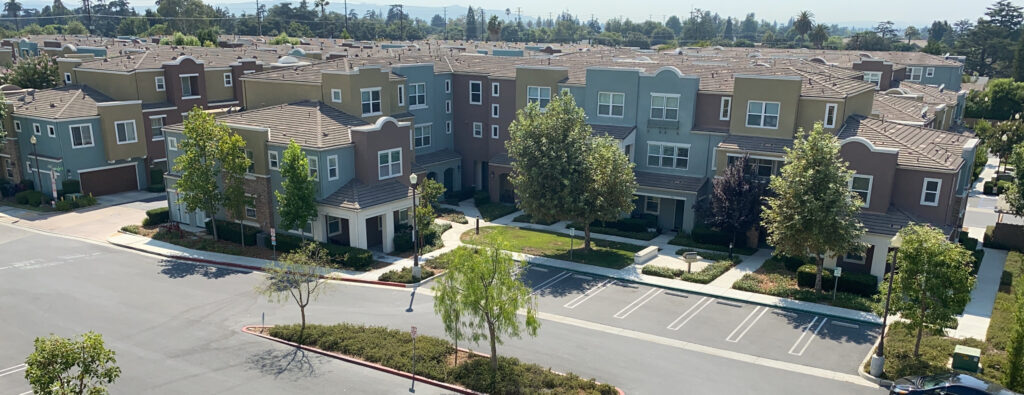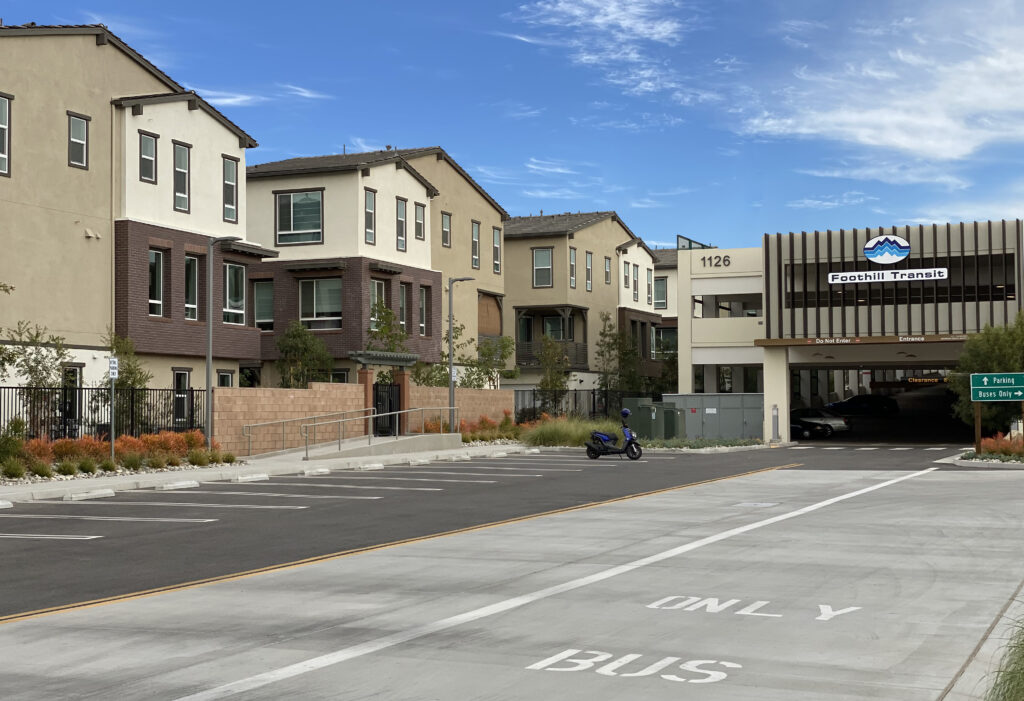From Opponents to Partners: Engagement Strategies for High-Density Development in California
Philip B. Gann | May 5, 2021

California is suffering from a slow-motion disaster as a result of its long-running housing crisis. In the past five decades, the state has failed to meet the demand for housing. High construction costs combined with a housing shortage has inflated mortgages and rents in California. Reports from the California Budget & Policy Center show that over 40% of Californians are severely housing burdened, meaning residents are paying over half of their income in housing costs. According to a study by McKinsey Global Institute in 2016, high rents result in a $100-billion annual drag on California’s economy by reducing disposable incomes and limiting new construction projects. Since the recession of the early 1990’s California has had only 3 years when it met its annual demand of 180,000 new homes. Since 2008 the yearly average is less than 70,000 new homes constructed.
Governor Newsom is taking steps to address the state’s serious housing crisis. Newsom’s administration mandated that Southern California cities and counties must plan to construct 1.3 million new homes in the next 10 years, that’s 130,000 new homes annually. Due to Newsom’s fair-share mandate, California communities are being forced to plan for higher densities. Fair-share is the calculated number of new housing units each city and county must plan to accommodate in order to fulfill their portion of the state’s growing population. While local governments must plan for these homes and remove barriers to their construction, building these homes is left to the private sector.
With incentives from the lawmakers, developers will have a better chance at creating higher density urban areas with affordable housing. Localities are now required to offer a streamlined ministerial approval for housing projects that meet local objective standards. Also, projects are allowed to bypass discretionary reviews and move projects forward without discretionally approval which would typically trigger the California Environmental Quality Act (CEQA). Critiques of CEQA claim abuses of the law have created barriers to providing much needed housing in the State. Supportive housing is now considered “by right” where zones allow it and the law permits local governments from imposing minimum parking requirements if the units are within a half mile of a public transit stop. Parking requirements have become one of the biggest challenges for historic reuse projects and increased density. Developers no longer need to attain a letter from city council to be approved for state funding assistance. Lastly, revisions have been made to the State’s Housing Accountability Act to strictly limit local governments’ authority to reject or restrict housing development projects. This culmination of state mandates is addressing the housing crisis by changing the roles of local governments and developers in an effort to increase the supply of new units and affordable housing.
Opposition
In recent decades local opposition groups use California’s referendum process to fight and kill high-density development projects or reduce their densities. Loomis CA is one example of how opposition squashed a project which would have energized their downtown, and as a result also scared off other development projects.
Opponents to developments are often referred to as NIMBY (“Not In My Back Yard”) communities. The NIMBY label frames opposition and discussion as bad instead of understanding who they are and what they represent. They are community partners with complex concerns and needs. According to Marina Petrova in her 2016 article in Renewable Energy, discontinuing the use of the term NIMBY is a must, “as it is a pejorative term and an insufficient descriptor of motivations in the community” (P.1292). Ceasing the use of the term is the first step towards turning opposition groups into community development partners.

Understanding the nature of why a community opposes projects is key to strategizing how to dialogue with communities to address their concerns. In the article “Democracy in Action,” Corianne Scally asked developers about community opposition to projects. The top reasons cited for opposition were Safety & Crime (65%), Tax Burdens (50%), Traffic Concerns (48%), School Impacts (46%), and Environmental Impacts (44%). Opposition was strongest when proposed development involved moving poor and low-income people into these communities.
The underlying concerns of community opposition are often rooted in fear and self-interests. A report put out by California Planning Roundtable and California’s Department of Housing and Community Development provides perspective on the myths and fears of affordable and high-density housing. Unfounded community beliefs are limiting their ability to accept the positive realities of higher density. In recent decades, cities have become the economic and sustainable powerhouses of the United States. While many of California’s wealthiest residents still choose to live in suburbs, most suburbs have been declining in quality, both economically and socially. Joe Minicozzi at Urban3 proves this point by simply doing the math for cities. Studying the taxes in his home town Ashville NC, mid-rise mix-use neighborhoods generate 13x times the tax revenue and 12x the jobs per acres when compared to suburban sprawl and it’s big-box stores.
Local communities across California fought high-density to their own detriment, limiting economic prosperity, perpetuating pollution and fueling inequality. Developers and local governments can help move communities in the right direction by building trust. In order to encourage trust and influence communities who have traditionally fought high-density developments, the “stick” is a poor motivation technique. A version of the stick is Governor Newsom’s threat to pull transportation funding from cities that fail to fulfill their “fair-share” of housing. The developers wield a stick by withdrawing investment from a community or threatening to sue. The carrot, on the other hand, is prosperity and resilience. Helping communities understand the shared benefits of projects is an important part of motivating support. The residents need to be respectfully guided with knowledge and facts that counter their fears and myths.
Trust
In his 2013 book Walkable City, Jeff Speck describes the trust dilemma that exists between local communities and planning professions. He writes “We’ve known for three decades how to make livable cities, after forgetting for four, yet we’ve somehow not been able to pull it off.” (Prologue). For much of the 20th century, city planners and traffic engineers did more harm to cities than good, and this was recognized by residents. Since the 1980’s, planners have learned from critiques such as those by Jane Jacobs but have still struggled to win over residents.
Scally reports that developers believe they face the strongest opposition during the phases of Site Selection, before project approvals (87%), after project approvals but before funding approval (74%), and after funding but before Construction (39%). Opposition has negative effects leading to increased costs, construction delays, and denied approvals.
Un-realized community partners become opposition when they are left out of the planning process and their concerns are not considered. A spike in opposition during site selection; before approvals is a clear indicator the community needs to be included earlier in the planning process. Given this information about the opposition’s concerns and timing, the question becomes, how do we best include community partners before site selection to limit surprise and opposition?
Community Engagement
There are several strategies of engagement that build trust and address other motivations leading communities to oppose development. Scally asked developers about the effectiveness of engagement. The two most useful strategies reported were informal meetings with community leaders (42%) and informal public information sessions (29%). Formal public hearings were far less effective (12%) and relied upon less frequently. Scally’s survey suggests participation is needed to determine the best proposals, rather than seeking participation as merely approval for a project that’s already been designed.
Urban Planner James Rojas argues that minority, immigrant, and low-income populations are often uncomfortable at formal public hearings or face language barriers. Minorities may not have a voice when paired against an outspoken person of privilege. To enhance community participation, Rojas facilitates Place It! workshops. These workshops are a creative and inclusive approach to community involvement. This big-picture dream approach focuses on providing a safe space and humanizing the planning process by providing everyone with multiple communications tools to offer input. Instead of leaving the outreach responses to the most vocal, Place It! workshops focus on group efforts and storytelling that help unite diverse community members over similar goals.

Uniting diverse community members over similar goals might be the key to addressing high-density development strategies in California. Rojas’ approach is not in direct response to a project proposal, but a similar creative and inclusive approach can be augmented to get people to think about the challenges of meeting state goals while addressing their concerns. Starting the dialog with community partners before specific projects are considered, is information developers could then use in their designs and for communication.
Building trust while uniting diverse voices will create a more democratic approach, bridging the gap between the goals of communities, planner, developer and the state. As high-density projects are already underway, planners are urged to keep the local communities in mind, designing with empathy and justice. Most importantly, proactively anticipating opposition to a project instead of merely reacting to it.

Philip B. Gann is a Master of Landscape Architecture Student at Cal Poly Pomona, set to graduate in 2021. He is focused on a career designing complex human habitats for the public realm and desires to play a major role in the development of California’s public transportation systems.